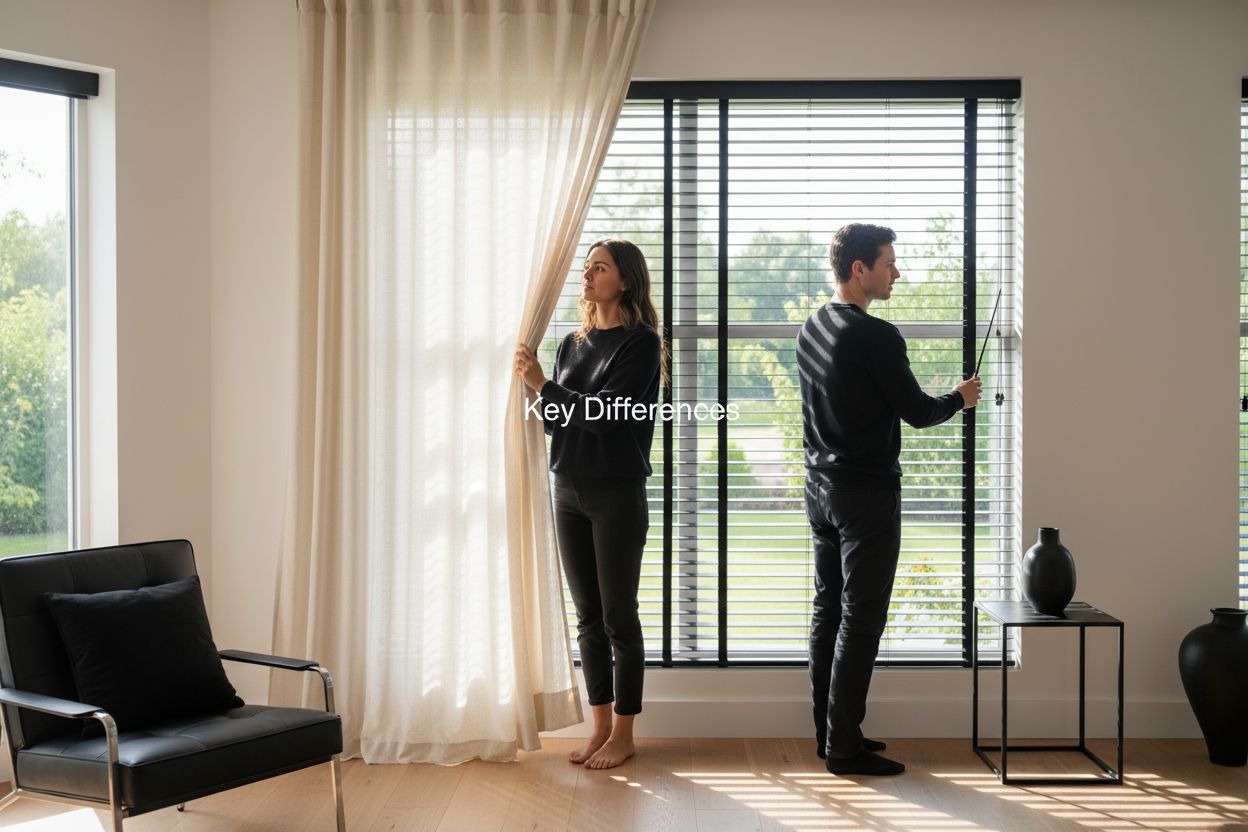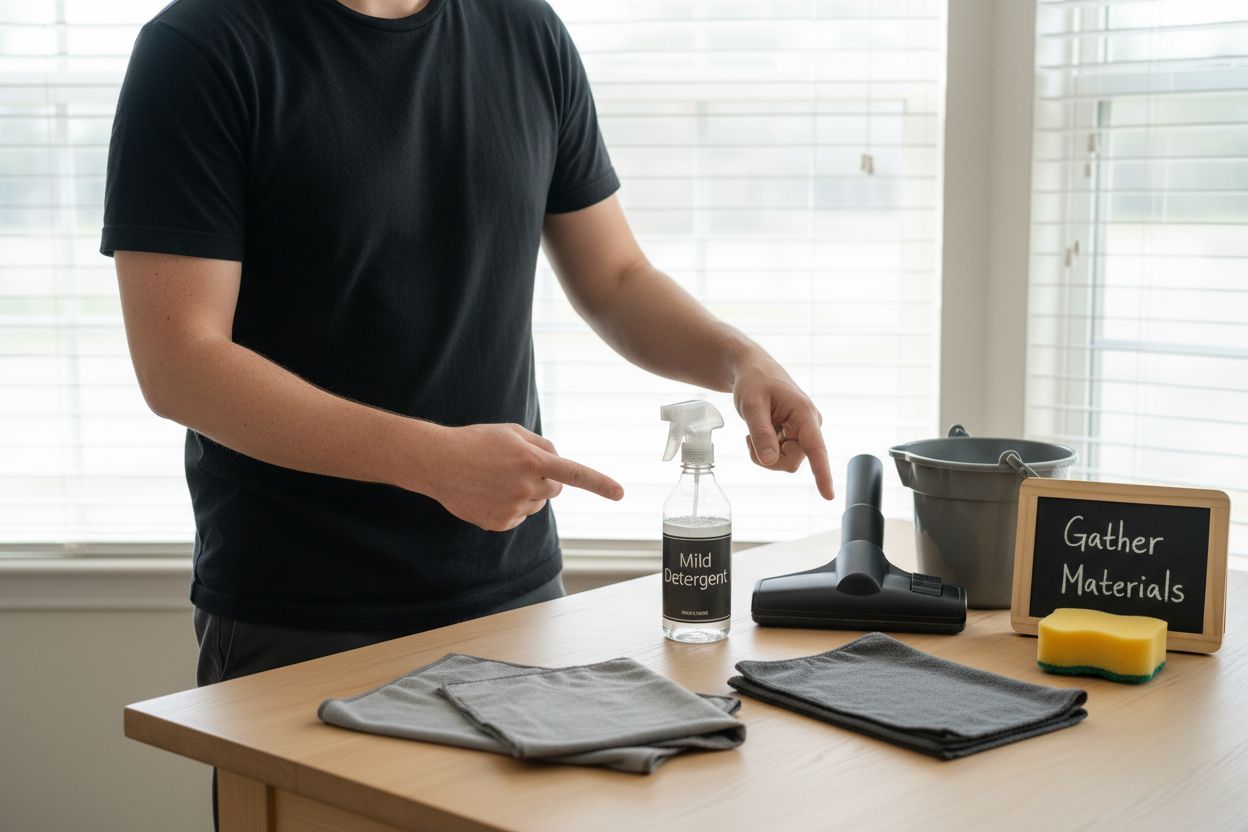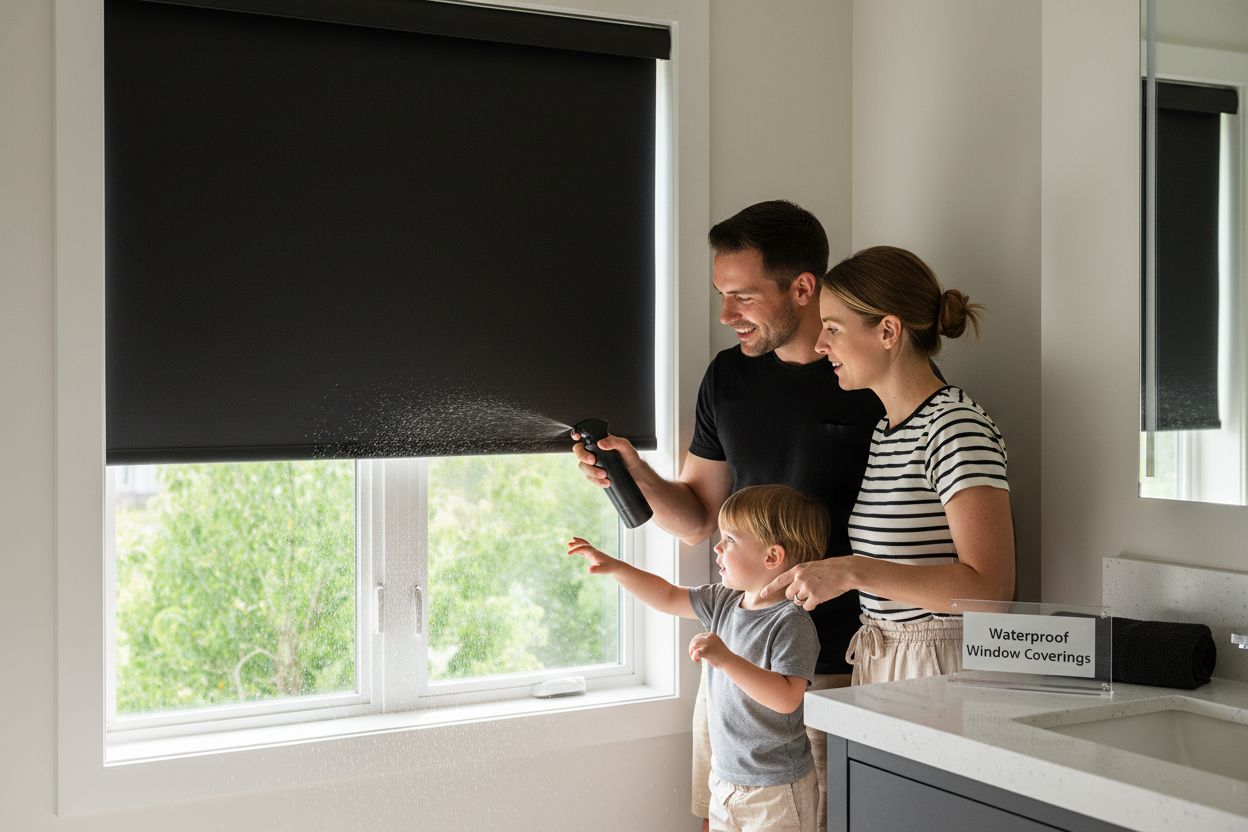
Understanding Waterproof Window Coverings for Your Home
Bathrooms, kitchens, and laundry rooms are always fighting battles with moisture. Some window coverings just give up and let mold take over. But here is an unexpected twist. Waterproof window coverings can reduce home maintenance expenses by up to 40 percent, and that is not just about saving money. It is also about keeping your living spaces healthier and looking newer for years to come.
Table of Contents
- What Are Waterproof Window Coverings?
- Why Waterproof Window Coverings Matter For Homeowners
- How Waterproof Window Coverings Function And Their Materials
- Key Concepts In Choosing Waterproof Window Coverings
Quick Summary
| Takeaway | Explanation |
|---|---|
| Invest in waterproof window coverings. | They protect interiors from moisture damage, extend the lifespan of window treatments, and maintain aesthetics. |
| Prioritize areas prone to moisture. | Use in bathrooms, kitchens, and near pools to combat humidity and prevent water infiltration. |
| Evaluate performance characteristics. | Check for moisture absorption rates and resistance to mold to ensure long-lasting effectiveness. |
| Consider professional installation and maintenance. | Proper sealing reduces moisture infiltration risks; regular cleaning preserves water-resistant properties. |
| Blend design with functionality. | Modern options allow for aesthetic customization without sacrificing moisture resistance or protection. |
What Are Waterproof Window Coverings?
Waterproof window coverings represent a specialized category of window treatments designed to withstand moisture exposure and prevent water damage. These innovative solutions protect interior spaces from potential water intrusion while maintaining aesthetic appeal and functionality.
Understanding Water Resistance Capabilities
Waterproof window coverings are engineered with advanced materials that repel water and resist moisture absorption. Unlike traditional window treatments, these specialized coverings utilize synthetic fabrics, treated textiles, and water-resistant polymers that create an impenetrable barrier against liquid penetration. According to Building and Construction Authority, water-resistant materials can significantly extend the lifespan of window treatments in high-moisture environments.
Key characteristics of waterproof window coverings include:
- Completely sealed fabric or material construction
- Resistant to mold and mildew growth
- Ability to maintain structural integrity when exposed to moisture
- Quick-drying surfaces that prevent water absorption
Practical Applications and Benefits
Homeowners frequently choose waterproof window coverings for specific areas prone to moisture exposure such as bathrooms, kitchens, laundry rooms, and spaces near swimming pools or coastal regions. These window treatments offer protection against humidity, condensation, and direct water contact while preserving design aesthetics. Architectural Digest highlights that modern waterproof window coverings can seamlessly blend functionality with contemporary interior design trends.
By investing in waterproof window coverings, you safeguard your interior spaces from potential water damage, prevent fabric deterioration, and maintain a clean, fresh appearance in moisture-sensitive environments. Read more about creative window covering solutions for moisture-prone areas to explore comprehensive protection strategies for your home.
Why Waterproof Window Coverings Matter for Homeowners
Waterproof window coverings transcend aesthetic considerations and play a critical role in protecting homes against moisture damage, improving interior environments, and extending the longevity of window treatments. Understanding their importance helps homeowners make informed decisions about protecting their living spaces.
Protecting Home Infrastructure
Moisture represents a significant threat to home infrastructure, potentially causing extensive damage that can be expensive to repair. According to the Environmental Protection Agency, persistent moisture can lead to mold growth, structural deterioration, and potential health risks. Waterproof window coverings act as a crucial barrier, preventing water infiltration and reducing the risk of long-term structural damage.
Key areas of home infrastructure vulnerable to moisture include:
- Window frames and surrounding wall structures
- Interior paint and wallpaper
- Wooden surfaces prone to warping or rotting
- Electrical installations near windows
Health and Comfort Considerations
Beyond structural protection, waterproof window coverings contribute significantly to maintaining a healthy indoor environment. High-moisture areas like bathrooms and kitchens are breeding grounds for mold and mildew, which can trigger respiratory issues and allergic reactions. By selecting water-resistant window treatments, homeowners create an additional layer of defense against potential health hazards.
Long-Term Cost Effectiveness
Investing in waterproof window coverings represents a strategic financial decision. National Association of Home Builders indicates that proactive moisture management can reduce home maintenance expenses by up to 40%. Waterproof window coverings minimize the need for frequent replacements, resist degradation, and maintain their aesthetic appeal over extended periods.
Learn more about energy efficient window treatment strategies to complement your moisture protection approach and enhance overall home performance.
How Waterproof Window Coverings Function and Their Materials
Modern waterproof window coverings utilize sophisticated engineering principles and advanced materials to create comprehensive moisture protection solutions for residential environments. Understanding their functional mechanisms and material compositions reveals the intricate science behind effective water resistance.
Material Composition and Design
Waterproof window coverings incorporate specialized synthetic materials engineered to repel moisture and maintain structural integrity. According to National Park Service preservation guidelines, effective water-resistant materials must create a continuous physical barrier against liquid penetration.
Primary materials used in waterproof window coverings include:
- Polyester and vinyl composites
- Treated synthetic fabrics with hydrophobic coatings
- High-density polymers with sealed molecular structures
- Specialized textiles with integrated water-repellent technologies
Functional Mechanisms of Water Resistance
These window coverings employ multiple strategies to prevent water infiltration. Sophisticated design elements include microscopically engineered surface textures that cause water droplets to bead and roll away, preventing absorption. Advanced polymer coatings create molecular barriers that actively repel liquid, ensuring comprehensive protection against moisture exposure.
Performance Characteristics
Waterproof window coverings distinguish themselves through exceptional performance metrics. They maintain structural stability when exposed to humidity, resist mold and mildew growth, and provide long-lasting protection without compromising aesthetic appeal. The materials are carefully selected to withstand repeated moisture exposure while retaining their functional and visual properties.
To help you quickly compare common materials and their benefits, here is an overview of typical components used in waterproof window coverings.
| Material Type | Key Properties | Benefits |
|---|---|---|
| Polyester and vinyl composites | Durable, non-absorbent, easy to clean | Resists moisture, maintains shape and appearance |
| Treated synthetic fabrics | Hydrophobic coatings, quick drying | Prevents mold growth, extends lifespan |
| High-density polymers | Sealed molecular structure, sturdy | Blocks water, prevents warping or rotting |
| Specialized textiles | Integrated water-repellent technologies | Combines style with effective moisture blocking |
Learn more about layering window treatments to enhance your home’s moisture management and design flexibility.
Key Concepts in Choosing Waterproof Window Coverings
Selecting the right waterproof window coverings requires a comprehensive understanding of multiple factors beyond basic moisture resistance. Homeowners must consider performance characteristics, design compatibility, installation requirements, and long-term functionality to make informed decisions.
Performance Evaluation Criteria
Moisture protection goes far beyond simple water repellency. Effective waterproof window coverings must demonstrate robust performance across multiple dimensions. According to Consumer Reports Testing Standards, comprehensive evaluation involves assessing material durability, moisture penetration resistance, and structural integrity under varied environmental conditions.
**Critical performance metrics include
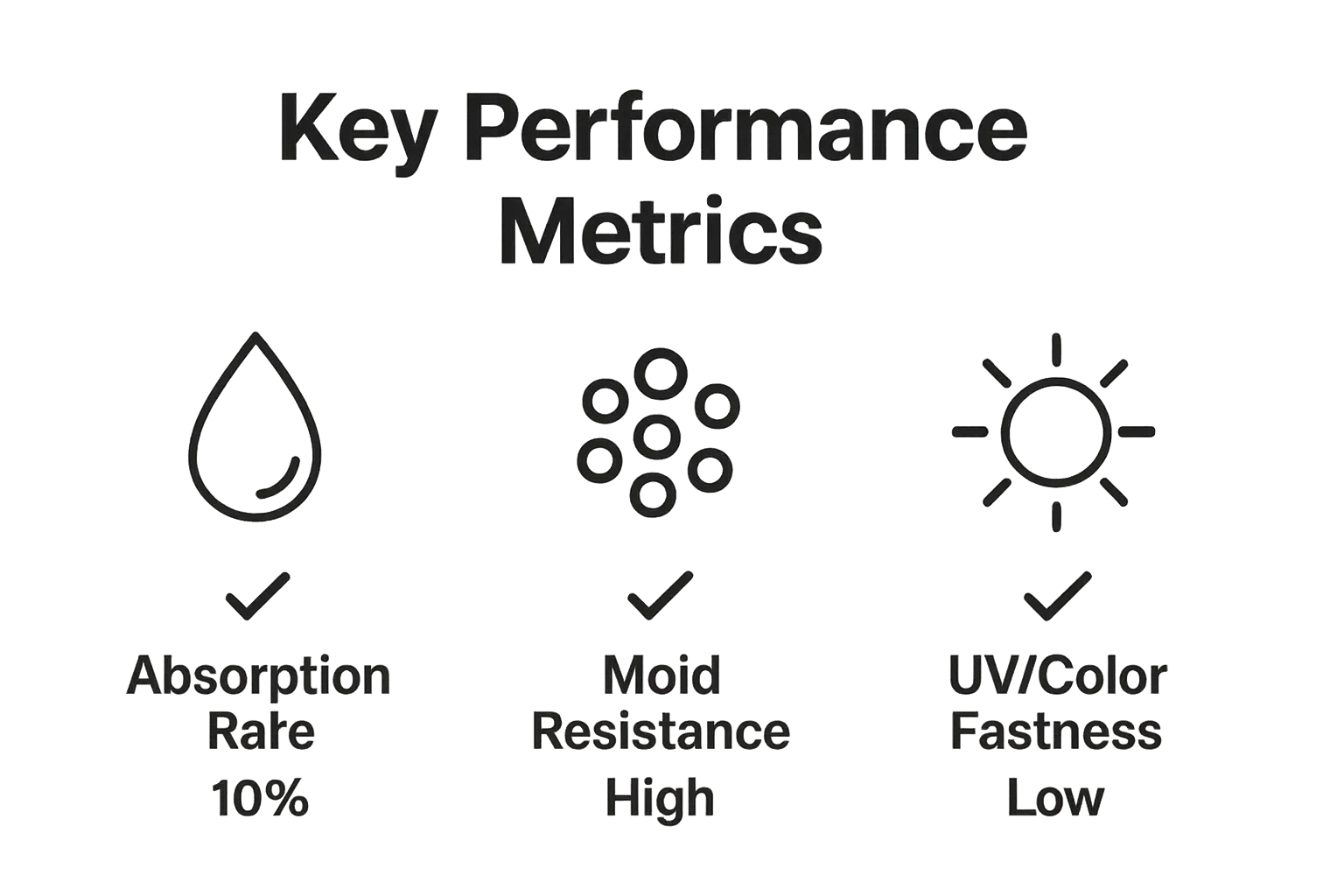 **:
**:
- Water absorption rate
- Resistance to mold and mildew development
- Fabric tensile strength after moisture exposure
- UV radiation and color fastness
- Temperature tolerance range
Design and Aesthetic Considerations
Waterproof window coverings should seamlessly integrate with existing interior design schemes while providing functional protection. Modern solutions offer extensive customization options, allowing homeowners to balance technical performance with visual appeal. Advanced manufacturing techniques enable the creation of waterproof window treatments that mimic traditional fabric textures and design patterns without compromising water resistance capabilities.
The following table summarizes essential performance criteria to evaluate when selecting waterproof window coverings for your home.
| Performance Metric | Description |
|---|---|
| Water absorption rate | Measures how much moisture the material takes in |
| Mold and mildew resistance | Ability to prevent fungal growth over time |
| Tensile strength after exposure | Material durability after being subjected to moisture |
| UV and color fastness | Resistance to fading or damage from sunlight |
| Temperature tolerance | Performance in varying indoor climates |
Installation and Maintenance Factors
Beyond initial selection, understanding proper installation and maintenance requirements is crucial for maximizing the effectiveness of waterproof window coverings. Professional installation ensures proper sealing and prevents potential moisture infiltration points.
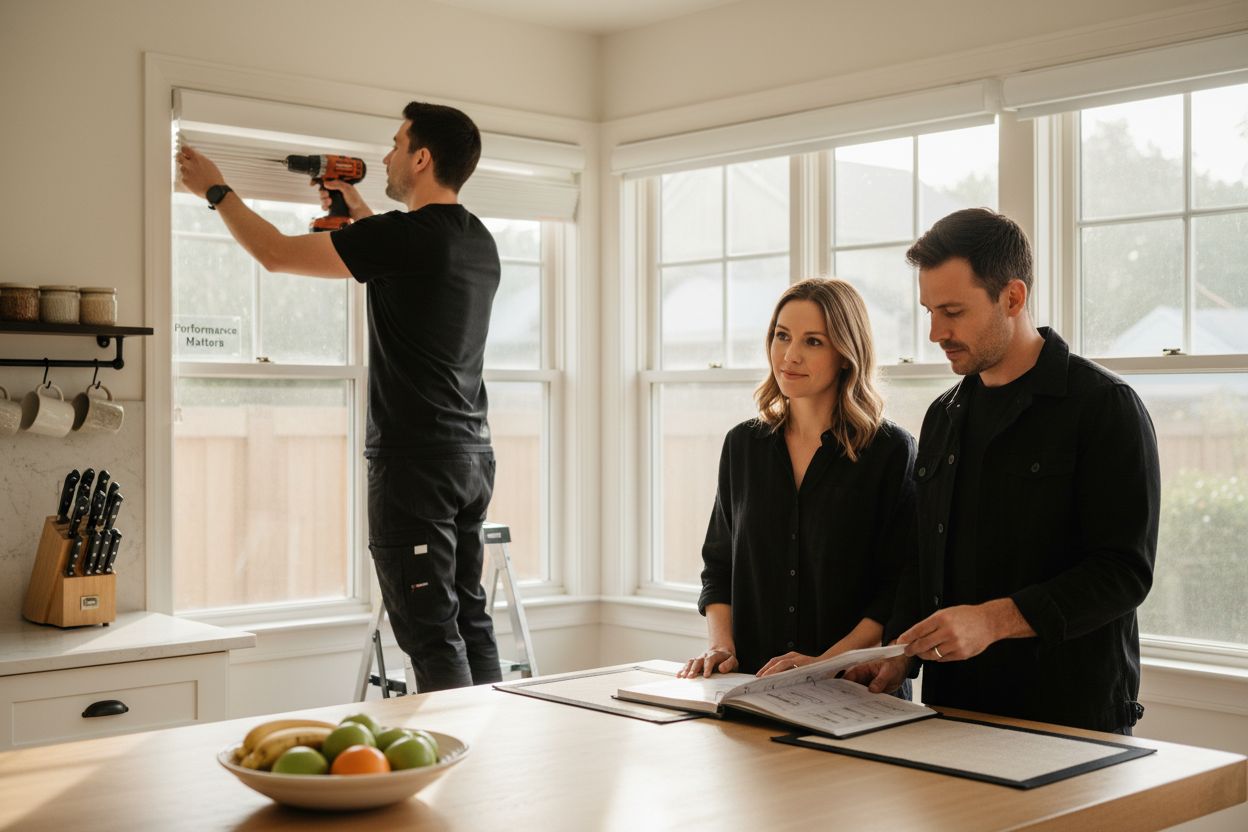 Regular maintenance, including periodic cleaning and inspection, helps preserve the water-resistant properties and extends the longevity of the window treatments.
Regular maintenance, including periodic cleaning and inspection, helps preserve the water-resistant properties and extends the longevity of the window treatments.
Learn more about window treatments for privacy to complement your moisture management strategy and enhance overall home comfort.
Protect Your Home With Advanced Waterproof Window Coverings
Are you tired of dealing with window treatments that discolor, warp, or attract mildew in damp areas of your home? The article highlights just how easily moisture can threaten your windows, putting both comfort and investment at risk. At Value Blinds, we offer innovative moisture-resistant solutions that blend modern style with long-lasting protection. Discover options that excel in the toughest spaces, like bathrooms and kitchens, and enjoy worry-free design in every room. Explore what makes our selections standout by visiting our Trending Features for the latest in waterproof window coverings.
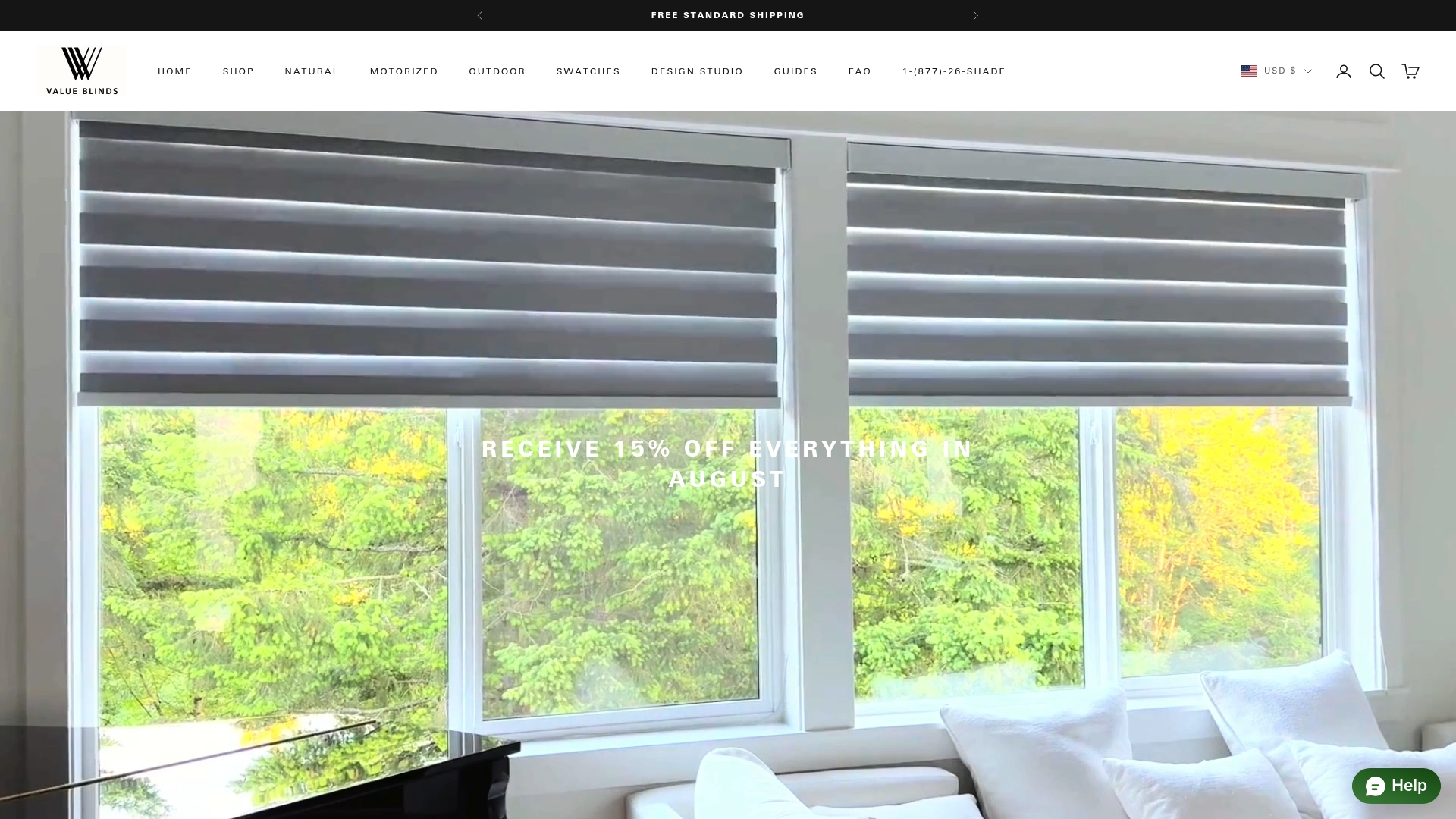
Don’t let your home be vulnerable to water damage or costly replacements. Shop now at Value Blinds Direct to find easy-to-install, customizable window treatments that keep your style and structure protected. Upgrade today so you can enjoy a healthier, cleaner, and more beautiful home backed by our expert support and energy-efficient solutions.
Frequently Asked Questions
What are waterproof window coverings?
Waterproof window coverings are specialized window treatments designed to resist moisture and prevent water damage. They are made from advanced materials that repel water and can be ideal for use in high-moisture areas of the home.
How do waterproof window coverings help protect my home?
These coverings act as a barrier against moisture, preventing water infiltration that can lead to mold growth, structural damage, and deterioration of window frames and surrounding areas.
What materials are commonly used in waterproof window coverings?
Waterproof window coverings are typically made from synthetic materials, such as polyester and vinyl composites, treated fabrics with hydrophobic coatings, and high-density polymers designed for moisture resistance.
Can waterproof window coverings be used in any room of the house?
Yes, waterproof window coverings are particularly beneficial in moisture-prone areas like bathrooms, kitchens, laundry rooms, and spaces near swimming pools or coastal regions, ensuring long-lasting protection and aesthetic appeal.
Recommended
- 7 Creative Bathroom Window Covering Ideas for Privacy
- Understanding Window Coverings for Bedrooms: A Comprehensive Guide
- Understanding Soundproof Window Coverings for Your Home
- Understanding Window Treatments for Privacy: Key Concepts
- What is Glass Coating? Understanding Its Importance – shinykingsinc
- Condensación en Ventanas: Causas y Soluciones eficaces


